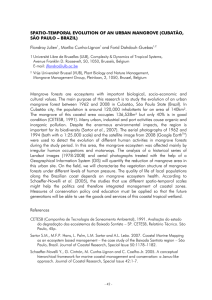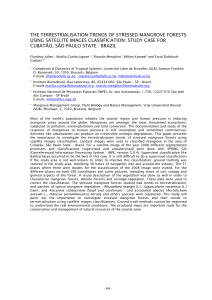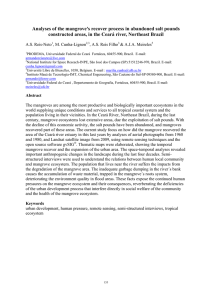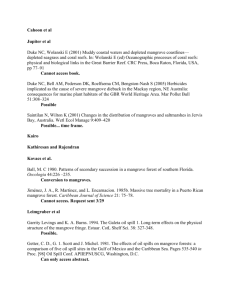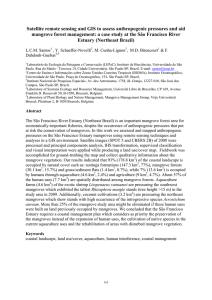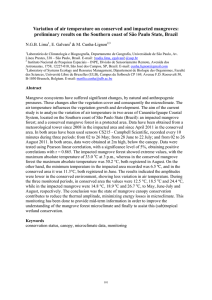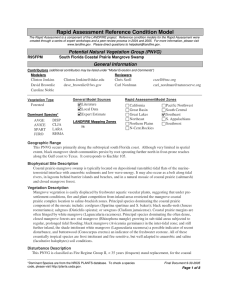Urban mangrove dynamics under increasing anthropogenic pressure:
advertisement
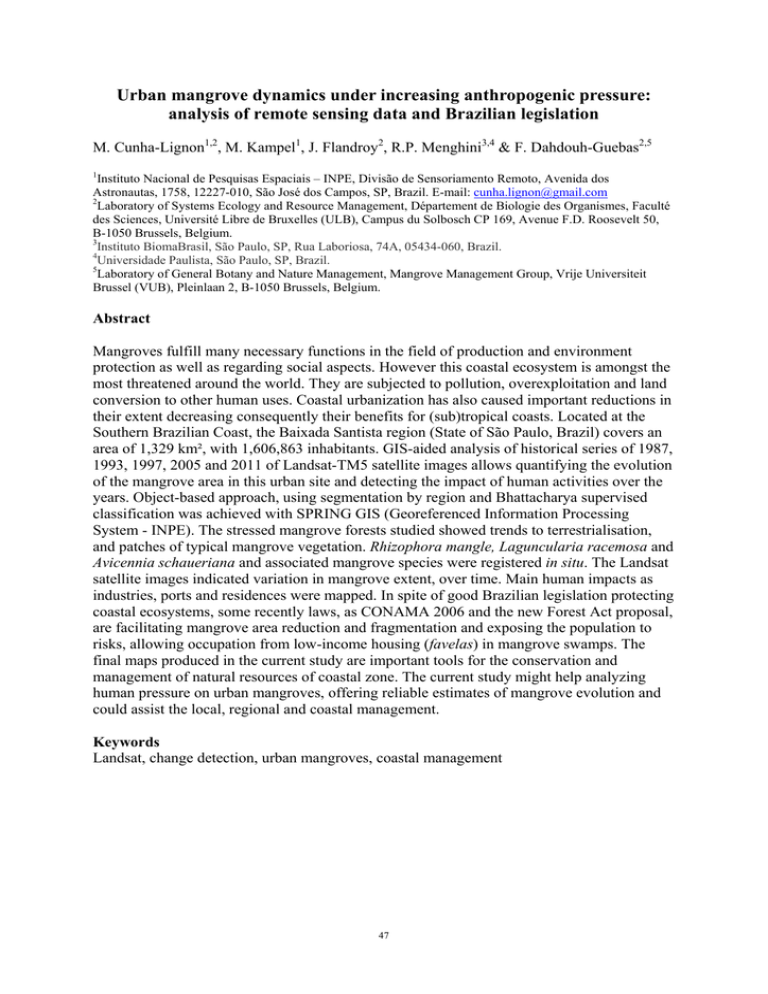
Urban mangrove dynamics under increasing anthropogenic pressure: analysis of remote sensing data and Brazilian legislation M. Cunha-Lignon1,2, M. Kampel1, J. Flandroy2, R.P. Menghini3,4 & F. Dahdouh-Guebas2,5 1 Instituto Nacional de Pesquisas Espaciais – INPE, Divisão de Sensoriamento Remoto, Avenida dos Astronautas, 1758, 12227-010, São José dos Campos, SP, Brazil. E-mail: cunha.lignon@gmail.com 2 Laboratory of Systems Ecology and Resource Management, Département de Biologie des Organismes, Faculté des Sciences, Université Libre de Bruxelles (ULB), Campus du Solbosch CP 169, Avenue F.D. Roosevelt 50, B-1050 Brussels, Belgium. 3 Instituto BiomaBrasil, São Paulo, SP, Rua Laboriosa, 74A, 05434-060, Brazil. 4 Universidade Paulista, São Paulo, SP, Brazil. 5 Laboratory of General Botany and Nature Management, Mangrove Management Group, Vrije Universiteit Brussel (VUB), Pleinlaan 2, B-1050 Brussels, Belgium. Abstract Mangroves fulfill many necessary functions in the field of production and environment protection as well as regarding social aspects. However this coastal ecosystem is amongst the most threatened around the world. They are subjected to pollution, overexploitation and land conversion to other human uses. Coastal urbanization has also caused important reductions in their extent decreasing consequently their benefits for (sub)tropical coasts. Located at the Southern Brazilian Coast, the Baixada Santista region (State of São Paulo, Brazil) covers an area of 1,329 km², with 1,606,863 inhabitants. GIS-aided analysis of historical series of 1987, 1993, 1997, 2005 and 2011 of Landsat-TM5 satellite images allows quantifying the evolution of the mangrove area in this urban site and detecting the impact of human activities over the years. Object-based approach, using segmentation by region and Bhattacharya supervised classification was achieved with SPRING GIS (Georeferenced Information Processing System - INPE). The stressed mangrove forests studied showed trends to terrestrialisation, and patches of typical mangrove vegetation. Rhizophora mangle, Laguncularia racemosa and Avicennia schaueriana and associated mangrove species were registered in situ. The Landsat satellite images indicated variation in mangrove extent, over time. Main human impacts as industries, ports and residences were mapped. In spite of good Brazilian legislation protecting coastal ecosystems, some recently laws, as CONAMA 2006 and the new Forest Act proposal, are facilitating mangrove area reduction and fragmentation and exposing the population to risks, allowing occupation from low-income housing (favelas) in mangrove swamps. The final maps produced in the current study are important tools for the conservation and management of natural resources of coastal zone. The current study might help analyzing human pressure on urban mangroves, offering reliable estimates of mangrove evolution and could assist the local, regional and coastal management. Keywords Landsat, change detection, urban mangroves, coastal management 47
